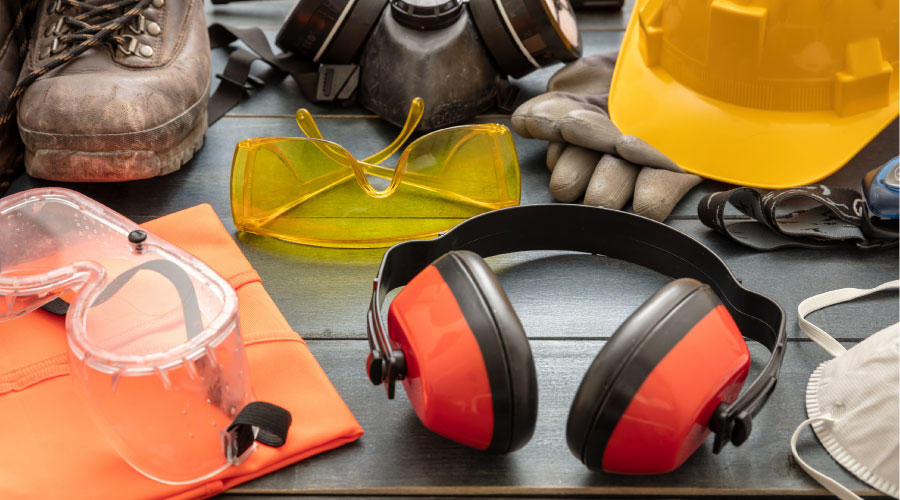Training Spotlight: Diagnostic Equipment
One department�s strategies for training technicians to more effectively use high-tech diagnostic and monitoring equipment
Technology advances in diagnostic and monitoring equipment have made a major impact on the efficiency of maintenance and engineering departments. More than ever, managers rely on this equipment to help front-line technicians uncover a range of problems, from electrical-system problems to poor indoor air quality. Without this equipment, many small problems might go undetected and evolve into much more costly dilemmas.
Among managers’ responsibilities is making sure their technicians receive training on how to use these critical pieces of equipment. Because of the complexity of today’s diagnostic equipment, as well as its high costs, managers must carefully consider their training options before the purchase. A manager of the maintenance department in Lee County, Fla., discusses his strategies for researching and arranging for this essential training.
Vendor Support
Vendors offering highly complex diagnostic and monitoring equipment often provide training, either on-site with a representative or off-site at their training facilities. Lee County’s maintenance department uses several high-tech devices, including an infrared camera that cost about $50,000.
“We often use it on our roofs to see if they are leaking or if AC is being expelled through the roof.” says Pat Stott, Lee County’s facilities operations manager. The county includes the city of Fort Myers. During the rainy season, his department uses the camera about once a week to check on the county’s 3 million square feet of facilities. Technicians use it frequently on interior walls and areas that have suffered water damage to pinpoint areas where moisture is entering the facility.
The camera also is effective when inspecting electrical equipment for “hot spots” and wasted energy.
“It shows us if our electric connections are loose by generating a heat difference,” he says.
Training was a central consideration when selecting a supplier for the infrared camera. Training for his department’s technicians was part of the purchasing agreement, and the technicians he selected to receive training traveled to the vendor’s facility to learn about the instrument’s functions.
While it might be less expensive to select a vendor who doesn’t provide training, Stott says a department that invests in high-tech equipment will find it worth the additional cost to pay for training.
“I recommend others to look for this kind of training if they can afford it,” he says.
Training on Site
In some cases, managers might find it is a better option to schedule training at the maintenance department’s headquarters or at a job site where technicians can witness a live demonstration of the equipment.
Lee County’s maintenance department recently purchased a camera featuring a video screen and recorder that is designed to help technicians inspect underground pipes and identify obstructions or other pipe-related problems, including cracks. In addition to a training video, the manufacturer provided the maintenance staff with a demonstration.
While the demonstration was helpful, Stott says, it wasn’t the best training because the representative didn’t conduct it at a job site.
“All he did is show us how the instrument worked with a piece of pipe that we laid on the ground,” he says. “In other words, we didn’t take it to a job site and actually use it in a real-life application. The manufacturer showed us how it works under perfect conditions, but we don’t have perfect conditions in the world.” For example, during a job, a technician might want to bend the equipment or try to do something with the product that it is not designed to do, he says.
After using the tool several times, the department’s plumbers gained a thorough knowledge of its capabilities.
“It was a little difficult at first, but they figured it out,” Stott says. “We recently opened a new building and had a problem with one of the bathrooms not working properly. We used the sewer viewer and found that the construction workers dumped a lot of materials down the pipe.”
In-house Issues
When an equipment vendor does not provide training or seminars, managers might want to consider turning to in-house training. Supervisors and lead technicians who have a thorough understanding of the equipment teach others in the department.
Stott’s department didn’t receive any training for its power-quality analyzer, which analyzes incoming utility power. The department uses it to test generators for county facilities that need back-up power in the event of an outage.
“The manufacturer did not provide us with training, and the equipment came with a very thin manual,” Stott says. “So I challenged a couple of the electricians with experience to figure out how to use it,” he says. After studying the analyzer for a month, they became familiar with the instrument’s basic functions. They then provided the other electricians in the department with a training program.
While this type of training is the most economical, it also can be inefficient.
“We’re never going to be able to use it to its fullest potential because we don’t know what its fullest potential is,” Stott says. “I’m sure there are a lot of things it could do for us that we are not aware of.”
Costs of Not Training
Any kind of training is better than no training at all because even the best technicians will not use products and technology they do not understand.
“We have some old equipment in our warehouse that is sitting on the shelf because the technology is very old and nobody knows how to use it,” Stott says.
To ensure a return on the investment, managers need track how often technicians uses diagnostic and monitoring equipment. Equipment that is neglected does not help the department’s mission and might indicate that the staff is not properly trained on the ways the tools can help them work more efficiently.
Training Resources
Air-Conditioning & Refrigeration Institute (ARI)
4100 N. Fairfax Drive, Suite 200
Arlington, VA 22203
(703) 524-8800
Air Movement and Control Association International
30 W. University Drive
Arlington Heights, IL 60004
(847) 394-0150
ASHRAE Learning Institute
1791 Tullie Circle N.E.
Atlanta, GA 30329
(404) 636-8400
BOMI Institute
1521 Ritchie Highway
Arnold, MD 21012
(800) 235-BOMI
International Association of Plumbing and Mechanical Officials (IAPMO)
5001 E. Philadelphia St.
Ontario, CA 91761
(909) 472-4100
National Electrical Manufacturers Association
1300 N. 17th St., Suite 1847
Rosslyn, VA 22209
(703) 841-3200
Plumbing-Heating-Cooling Contractors–National Association
180 S. Washington St., P.O. Box 6808
Falls Church, VA 22040
(703) 237-8100
|
Related Topics:











